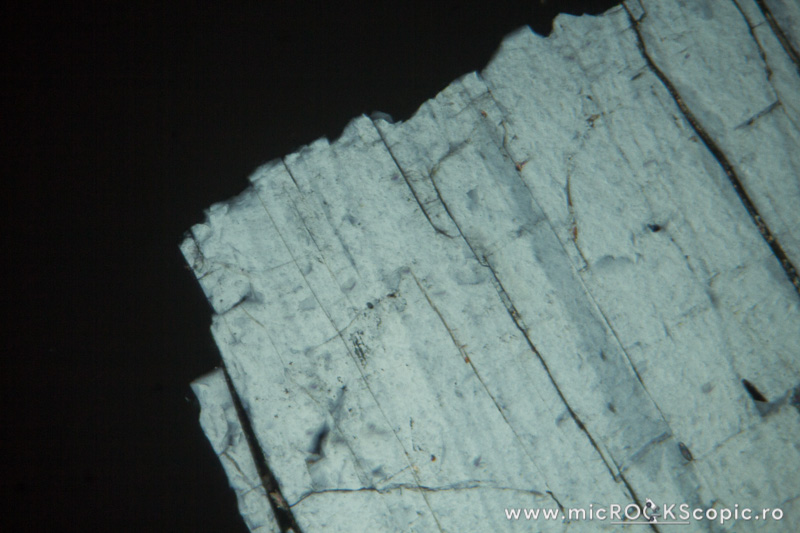About Apatite
(Mineral group name), from Greek for to deceive, because the gem varieties were confused with other minerals.
Apatite hand-specimen
Formula: Ca5(PO4)3(OH, F, Cl)
System: Hexagonal
Color: Colourless, white, etc.
Lustre: Vitreous, Sub-Vitreous, Resinous, Waxy, Greasy
Hardness: 5
Density: 3.10–3.21
System: Hexagonal
Color: Colourless, white, etc.
Lustre: Vitreous, Sub-Vitreous, Resinous, Waxy, Greasy
Hardness: 5
Density: 3.10–3.21
Apatite PPL properties
Relief: Moderate positive
Habit/Form: Apatite forms small euhedral to subhedral elongate prismatic crystals with hexagonal cross sections. Longitudinal sections through the crystals are usually elongate-rectangular in outline with the poor cleavage cutting across the length. Also found as anhedral grains, and granular or columnar aggregates. Collophane (fine-grained cryptocrystalline material that contains a substantial amount of apatite) is usually brown and essentially isotropic; forms colloform, encrusting, spherulitic, oolitic, and related structures; and is a major constituent of some fossil bone.
Color: Colorless; detrital crystals may be pale green or exhibit pleochroic purple centers
Pleochroism: Absent to weak – moderate
Cleavage: Imperfect basal {0001} shown as cross fractures. Larger crystals may show imperfect cleavage parallel to the length {1010}.
Habit/Form: Apatite forms small euhedral to subhedral elongate prismatic crystals with hexagonal cross sections. Longitudinal sections through the crystals are usually elongate-rectangular in outline with the poor cleavage cutting across the length. Also found as anhedral grains, and granular or columnar aggregates. Collophane (fine-grained cryptocrystalline material that contains a substantial amount of apatite) is usually brown and essentially isotropic; forms colloform, encrusting, spherulitic, oolitic, and related structures; and is a major constituent of some fossil bone.
Color: Colorless; detrital crystals may be pale green or exhibit pleochroic purple centers
Pleochroism: Absent to weak – moderate
Cleavage: Imperfect basal {0001} shown as cross fractures. Larger crystals may show imperfect cleavage parallel to the length {1010}.
Apatite XPL properties
Isotropy/Anisotropy: Anisotropic
Interference color: Order I (black, gray to white). Cross sections are dark between crossed polars.
Extinction angle: Parallel / 0° / straight
Twins: Apatite twins are rare.
Uniaxial/Biaxial: Uniaxial (-)
Optic axial angle (2V): –
Interference color: Order I (black, gray to white). Cross sections are dark between crossed polars.
Extinction angle: Parallel / 0° / straight
Twins: Apatite twins are rare.
Uniaxial/Biaxial: Uniaxial (-)
Optic axial angle (2V): –
Apatite distinguishing features under the microscope
Get Geology Toolkit Premium for more features of Apatite thin section under the microscope.
References
- Deer, W. A., Howie, R. A., & Zussman, J. (2013). An introduction to the rock-forming minerals (pp. 498). Mineralogical Society of Great Britain and Ireland, London.
- mindat.org – The Mineral Database





![[thumb]](http://microckscopic.ro/wp-content/uploads/apatite_1_parallel_04-150x150.jpg)
![[thumb]](http://microckscopic.ro/wp-content/uploads/apatite_1_parallel_01-1-150x150.jpg)






